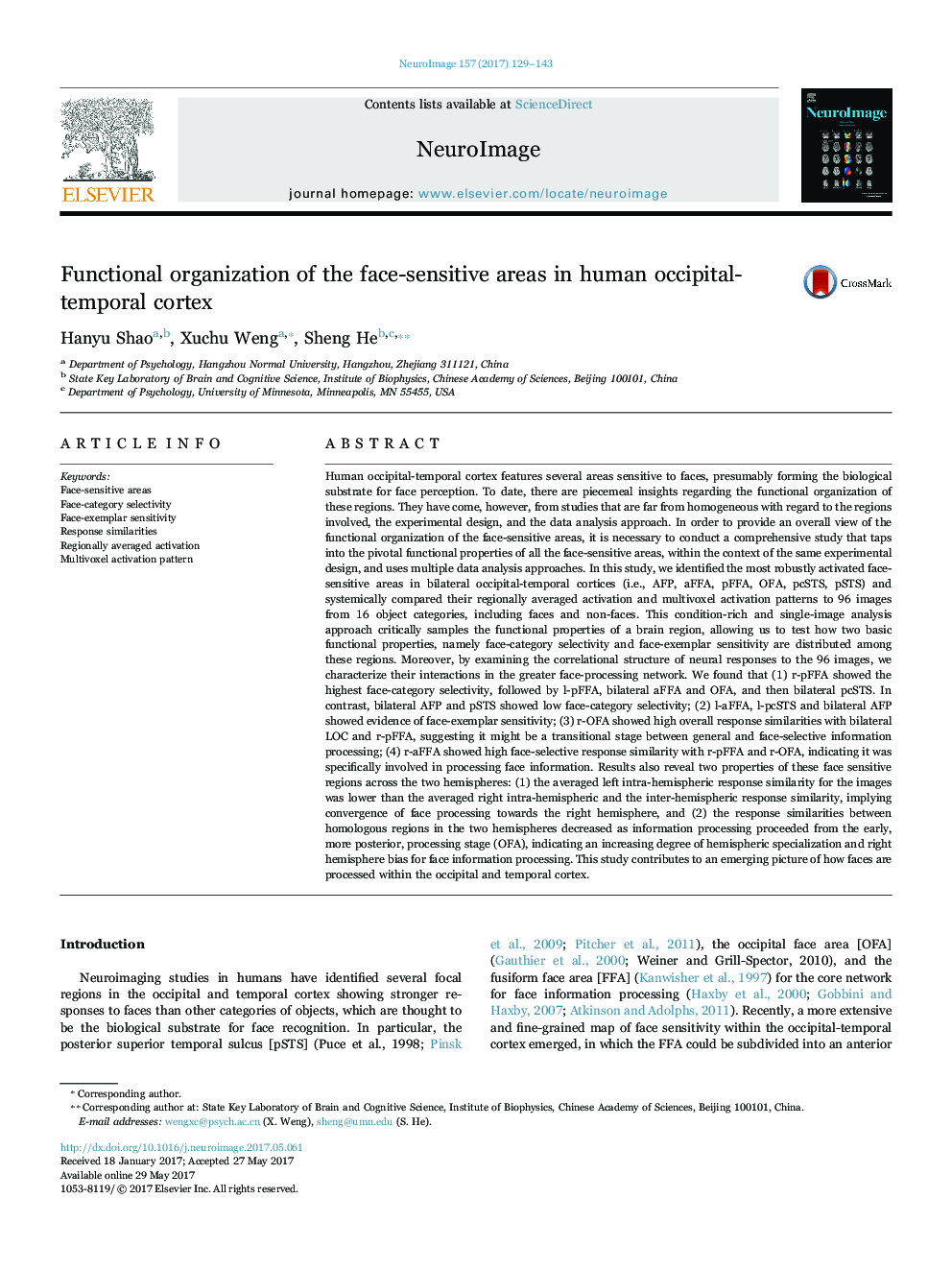| کد مقاله | کد نشریه | سال انتشار | مقاله انگلیسی | نسخه تمام متن |
|---|---|---|---|---|
| 5630905 | 1580853 | 2017 | 15 صفحه PDF | دانلود رایگان |
- r-pFFA showed highest face-category selectivity, followed by l-pFFA, bilateral aFFA and OFA, then pcSTS, AFP and pSTS.
- l-aFFA, l-pcSTS and bilateral AFP are more capable in discriminating face exemplars.
- r-OFA is a key relay stage between non-face-selective and face-selective areas.
- r-aFFA is most face-specific in its response similarity with other areas.
- Face processing converges towards the right hemisphere, and shows increased hemispheric asymmetry beyond OFA.
Human occipital-temporal cortex features several areas sensitive to faces, presumably forming the biological substrate for face perception. To date, there are piecemeal insights regarding the functional organization of these regions. They have come, however, from studies that are far from homogeneous with regard to the regions involved, the experimental design, and the data analysis approach. In order to provide an overall view of the functional organization of the face-sensitive areas, it is necessary to conduct a comprehensive study that taps into the pivotal functional properties of all the face-sensitive areas, within the context of the same experimental design, and uses multiple data analysis approaches. In this study, we identified the most robustly activated face-sensitive areas in bilateral occipital-temporal cortices (i.e., AFP, aFFA, pFFA, OFA, pcSTS, pSTS) and systemically compared their regionally averaged activation and multivoxel activation patterns to 96 images from 16 object categories, including faces and non-faces. This condition-rich and single-image analysis approach critically samples the functional properties of a brain region, allowing us to test how two basic functional properties, namely face-category selectivity and face-exemplar sensitivity are distributed among these regions. Moreover, by examining the correlational structure of neural responses to the 96 images, we characterize their interactions in the greater face-processing network. We found that (1) r-pFFA showed the highest face-category selectivity, followed by l-pFFA, bilateral aFFA and OFA, and then bilateral pcSTS. In contrast, bilateral AFP and pSTS showed low face-category selectivity; (2) l-aFFA, l-pcSTS and bilateral AFP showed evidence of face-exemplar sensitivity; (3) r-OFA showed high overall response similarities with bilateral LOC and r-pFFA, suggesting it might be a transitional stage between general and face-selective information processing; (4) r-aFFA showed high face-selective response similarity with r-pFFA and r-OFA, indicating it was specifically involved in processing face information. Results also reveal two properties of these face sensitive regions across the two hemispheres: (1) the averaged left intra-hemispheric response similarity for the images was lower than the averaged right intra-hemispheric and the inter-hemispheric response similarity, implying convergence of face processing towards the right hemisphere, and (2) the response similarities between homologous regions in the two hemispheres decreased as information processing proceeded from the early, more posterior, processing stage (OFA), indicating an increasing degree of hemispheric specialization and right hemisphere bias for face information processing. This study contributes to an emerging picture of how faces are processed within the occipital and temporal cortex.
Journal: NeuroImage - Volume 157, 15 August 2017, Pages 129-143
